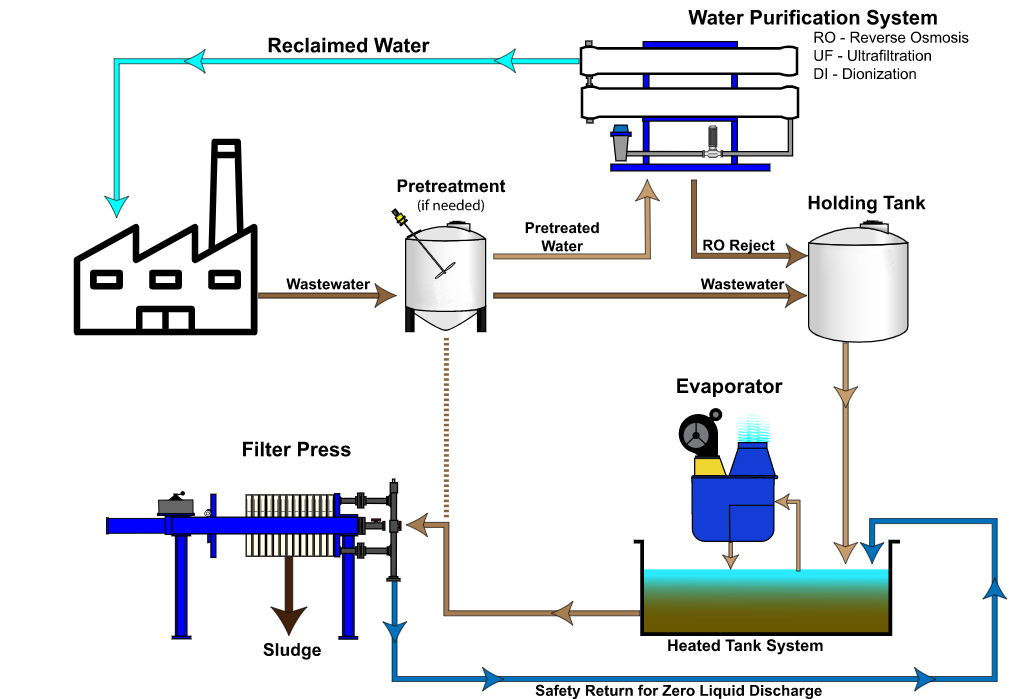What is Zero Liquid Discharge?
Zero Liquid Discharge (ZLD) is a wastewater treatment process in which all wastewater is either recycled or evaporated, thus leaving zero liquid waste to be discharged. The purpose of a Zero Liquid Discharge System is to produce clean reusable water and safely dispose of wastewater. Thus, minimizing disposal costs, and reducing your environmental footprint.
Achieve Zero Liquid Discharge
Every industry produces different types of wastewater each with unique challenges. GEA has the expertise, experience, and technology to treat a wide variety of wastewater. Achieving Zero Liquid Discharge is accomplished through water purification, evaporation, and sludge dewatering. GEA offers various systems for water purification including Ultrafiltration (UF), Reverse Osmosis (RO), and Deionization (DI).
Zero Liquid Discharge System with Reclaimed Water

How does a ZLD System with Reclaimed Water Work?
Pretreatment
The first step in achieving Zero Liquid Discharge is to pretreat the wastewater if required. This may be needed to remove certain toxins, and reduce the number of Total Suspended Solids (TSS). This step will also help to preserve the life of the Reverse Osmosis (RO) or Ultrafiltration(UF) membranes.
Water Purification
In this step, the wastewater is purified to the level of reuse. Some industries require ultra-pure water (UPW), and other industries only require potable water. GEA will purify the water to the level your company needs.
Evaporation
Any wastewater that cannot be purified will be transferred to a holding tank to be processed. The wastewater is pumped into a heated tank system where the evaporator will evaporate the water. The wastewater will concentrate. The concentrated slurry will then be pumped into a Filter Press to capture the solids. The filter press will also keep the heated tank clean and provide a seamless operation.
Solids Removal
In the final step, the filter press will capture solids, and return the remaining liquid for evaporation. The solid waste is discharged into a Sludge Cart where it can be properly disposed of in a landfill. In some cases, the solids can be sold or processed for reuse.
